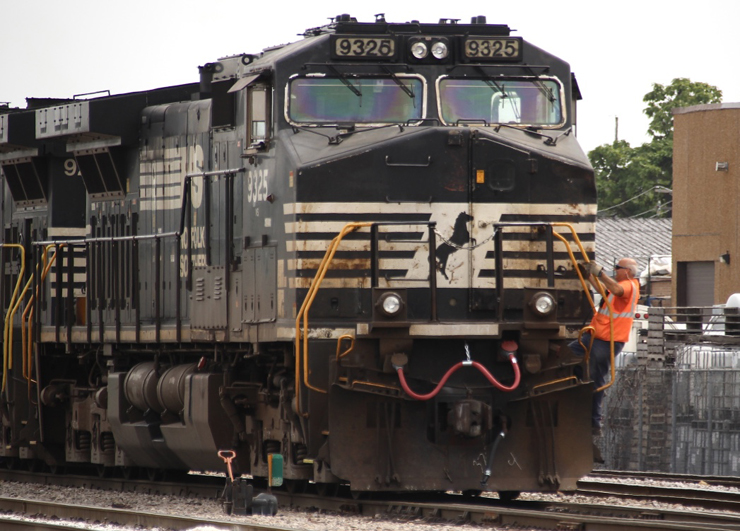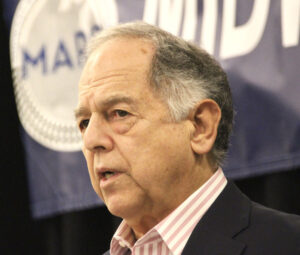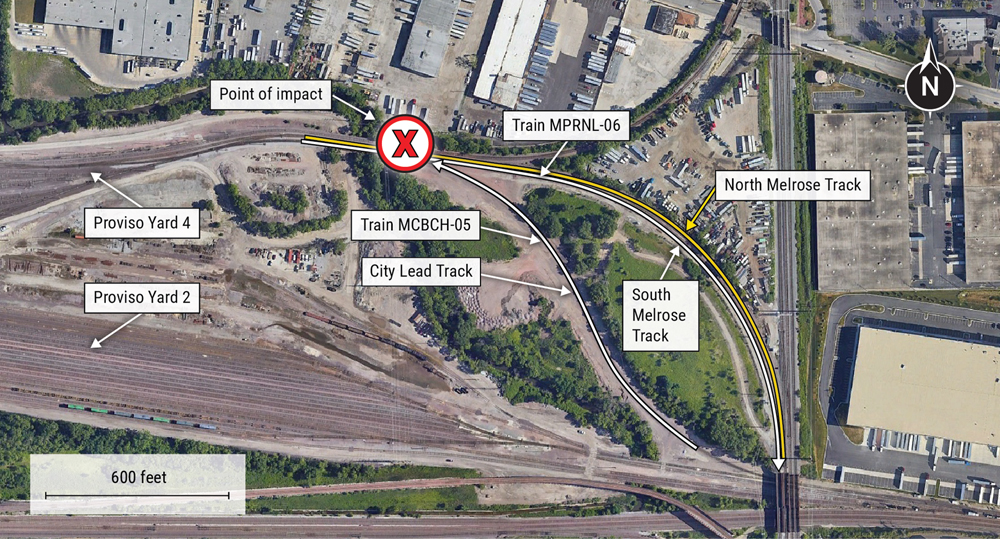
Executives from the big four U.S. railroads — BNSF Railway, CSX Transportation, Norfolk Southern, and Union Pacific — will take turns in the hot seat next week during two days of Surface Transportation Board hearings on widespread service problems.
Federal regulators, fed up with ongoing shipper complaints, will want to know how and when the railroads will get their service out of the ditch. Average train speed is down an average of 9% over the past four weeks compared to a year ago, while terminal dwell is up 12%. And the number of trains held per day for lack of crews and power remains stubbornly high. This comes despite traffic volume being 4% lower than last year.
Nearly two dozen shipper associations and individual shippers are scheduled to air their complaints during the April 26-27 hearings at the STB’s headquarters. They’ll be joined by officials from the U.S. Department of Agriculture and the Federal Maritime Commission, as well as representatives from five railroad labor unions.
Shippers will tell the STB about missed switches, cars delayed by days or weeks, and loaded unit trains that have had to wait two weeks or more for crews and locomotives. They’ll also show how delays have caused plants to curtail production or shut down for lack of raw materials. And they’re likely to take advantage of the crisis, too, by advocating for things that have long been on their agenda, such as reciprocal switching and rate reforms.

STB Chairman Martin J. Oberman will take the railroads to task over Precision Scheduled Railroading, related deep employment cuts over the past few years, and kowtowing to Wall Street demands for ever lower operating ratios.
While it’s obvious that job cuts related to PSR are a contributing factor to crew shortages, railroads have a history of having trouble flexing up their resources when traffic spikes. They also have a history of not having enough crews or locomotives to bounce back from disruptions caused by hurricanes, floods, fires, or a polar vortex. In other words, today’s funk is not a new phenomenon.
Making PSR as the sole culprit for the job cuts, as the chairman appears to be doing, ignores this history as well as current economic forces that are out of the railroads’ control.
Railroads trimmed their train and engine crew levels at the onset of the pandemic-related traffic downturn in 2020, just as they have done whenever volume falls. What’s different this time? Not as many engineers and conductors picked up the phone when railroads sought to call them back to work. Train crews left the railroads in higher numbers than usual, partly because they’re being overworked and treated poorly. And the wave of resignations during the tightest job market in decades — something that’s affecting every business — has made it much more difficult for the railroads to hire new conductors.
So clearly some of the railroads’ troubles are self-inflicted. But it would be unfair to pin the blame entirely on the railroads when everyone from airlines to warehouses are short of employees.
Railroads find themselves in a tight spot. There’s no quick fix when crew shortages are at the root of the problem. In fact, it generally takes railroads anywhere from six months to a year or more to staff up and restore service to normal levels. You can expect the railroad execs will apologize for service failures while emphasizing their hiring efforts and other steps they are taking to fix service.
The big unknown: What will the STB do?
The STB has the power to impose emergency service orders, something it did in 1997 amid the meltdown that followed the Union Pacific-Southern Pacific merger. Among the elements of that order: Prioritize agricultural shipments after finding that both BNSF Railway and UP provided inadequate service.

But the board historically has been reluctant to issue emergency service orders. And clearly the widespread service problems facing U.S. railroads today pale in comparison to the paralysis that gripped UP in 1997.
The board typically prefers to shine a spotlight on the problem, make rail executives squirm at public hearings, and require additional reporting on various performance metrics.
Most recently, this is how the STB handled the CSX Transportation service problems after E. Hunter Harrison’s rapid-fire operational changes as part of implementation of Precision Scheduled Railroading in 2017. The board took a similar approach after the brutal winter of 2013-14 — combined with the surge in crude oil, frac sand, and grain traffic — gummed up Chicago and the rest of the Midwest.
Today it’s unclear how the STB could impose service orders without making a fragile situation worse since all railroads are in the same jam.
Loop Capital Markets analyst Rick Paterson sums up the situation well in a note to clients. “Every organization has its breaking point and it feels like the STB is at the end of its tether on this issue …. With the regulatory light flashing red it’s therefore even more imperative the railroads get their act together,” he wrote. “They each need some positive data points to highlight on April 26 and 27, otherwise we’re going to be watching some really uncomfortable conversations. Break out the popcorn.”
You can reach Bill Stephens at bybillstephens@gmail.com and follow him on LinkedIn and Twitter @bybillstephens














Curt, you have hit the nail on the head. Reasonable dispatch with fines payable to the shippers for late arrivals is the way to go. Railroads would hire enough train crews and provide enough locomotives for on time delivery.
I don’t think anyone in executive management cares about this. They’ll be very good at spending one part lots of time acknowledging and accepting that they’re not doing their best but then they’ll follow that with 9 parts how awesome they’re doing with a bunch of other things and outlining all the excuses causing the problems that are beyond their control.
They’re smug and superior and believe they have everything under control and not only don’t need any help or told what to do, they resent the idea of it.
BNSF may not be exactly following the PSR playbook but their attendance policy is a disaster. The service is suffering because people are bailing. So they do belong at the table.
You are 100% correct. In the past month, I’ve seen over a dozen coworkers quit, all with 10 – 20 year’s of service, and half with their engineer’s card. Don’t kid yourself: this is all being done on purpose so BNSF can say: “one man crews is the only answer” and I’m certain the STB, FRA, and Congress will say “OK. Just get the products moving on time again”.
Let the TAP DANCE SHOW begin. I expect to hear COVID-19 blamed for much of the crew shortages. And NO one could have foreseen that so it is NO ones fault, Or some BS like that. Hope Marty O holds their feet to the fire.
I see a problem with throwing BNSF into the mix, they’re not beholden to any stockholders as a subsidiary of Berkshire Hathaway for one. Two, they haven’t exactly embraced PSR like the rest of the class 1’s have. Three, every railroad is having employment issues, you can’t force people to work for the railroad(well, you could, but that wouldn’t be American, and good luck finding enough clean people to pass the drug tests). As for Wall Street, the only way to get them off the backs of the BoD’s and CEO’s is to set a minimum OR for the freight carriers, or a minimum range. I’d personally set it somewhere between 65 and 75, that’s good enough to make big profits still, reinvest in the railroad and provide the service they’re supposed to.
I agree about the OR. But I don’t know how that could be enforced without being highly criticized and contraversal. Maybe a stipulation that if OR drops below 65 the railroads have to increase their portion of all public/private projects involving federal funding? That only seems fair. Also limits on how much share buybacks are allowed might encourage more capital investments and resources to increase capacity. Would be interesting if you could tie that to service levels or something.
BNSF definitely belongs in the mix. This new “pc friendly” CEO is trying to make a name for herself and she’s doing a wonderful job. She’s got morale in the toilet across every craft as she “drops the hammer” and employees quit in record numbers. She will drive BNSF into the abyss striving for record profits for Uncle Warren. Trains are being purposely slowed down to save fuel. If customers and timely deliveries were so important, than throttle and power limitations wouldn’t be, but they are. Trains are purposely running 20 to 40 MPH below track speed, extending every crews on duty time. That’s all wasted utilization of crews, and they’re blaming “crew shortage” for all their problems. These problems are self created and are being done on purpose so BNSF can go “1 man crews”. That’s all this is about. They know the record profits they’re making now will go up exponentially by getting their way, and unfortunately, the STB, FRA, and Congress will give it to them.
It seems like the only way to fix the problem is to require the board of directors of at least the railroads and maybe all public service corporations to include representatives of labor and the publict(heir customers.) This is especially true for corporations that have had the power of eminent domain to acquire a large portion of their assets (right of way.) This might require some new legislation and maybe court approvals,
Recall riding Hudson River Line via Amtrak “back in the day”. It was during the holiday season and the train was packed. No open seats. A passenger loudly engaged the conductor demanding a seat. The well-seasoned conductor replied immediately “Your ticket is for transportation, not a seat”. After a continued, heated exchange, at the next station stop, the police entered the car and escorted the complaining ticket holder off the train. Under PSR, railroads offer transportation on the rails, not a seat on a hot shot.
30yrs in the railroad industry and I can say the problem is PSR and and CEOs who are only worried about Wall Street. Get rid of all the current CEOs and install real railroaders , those that care about customers and employees and most of the problems will go away
Prior to Staggers, railroads were held to a nebulous standard of “reasonable dispatch” where the movement of individual shipments was concerned.
I’m wandering if the STB would have the authority to pull that standard from the “shelf in the basement”, dust it off, add some actual definition as to what constitutes “reasonable dispatch”, then impose it on the railroads for both tariff and contract traffic.
Additionally; if shippers were permitted to file for damages when reasonable dispatch standards were not met, the C1’s would suddenly find themselves with a financial incentive to elevate shipper interests at least to the point of standing alongside those of the shareholders.
Curt, you have hit the nail on the head. Reasonable dispatch with fines payable to the shippers for late arrivals is the way to go. Railroads would hire enough train crews and provide enough locomotives for on time delivery.
Stock holders don’t seem to be too concerned, and there is no delay in them getting their dividends…what’s the problem? Everything is kosher on Wall Street!
As a small stockholder, I want the management to take care of customers and employees. If they do, then the dividends will take care of themselves. For a long time.
STB warned them last year.
STB is has run out of warnings. STB’s next action won’t be a warning, it will be a hammer blow.
With whom does railroad management think it’s first responsibility lies? The customers, stakeholders or its employees?
Looks pretty obvious, doesn’t it? Time for some rethinking perhaps?